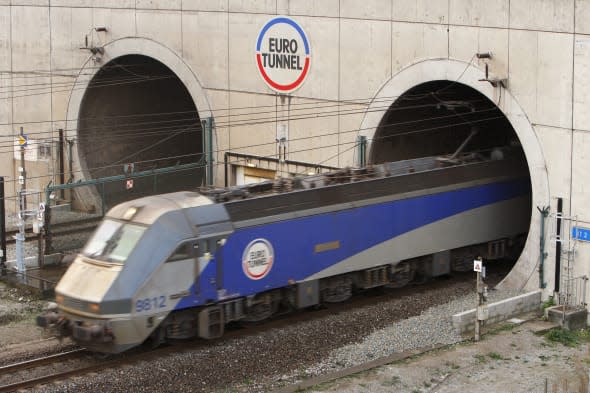Channel tunnel dates back more than 200 years

The 20th anniversary of the opening of the Channel Tunnel is being celebrated this week, but the origins of the Anglo-French fixed link stretch back more than 200 years.
The idea of Britain and France being linked given their history as sworn enemies for centuries would have struck anyone in the 19th century as bizarre.
But in 1802 French mining engineer Albert Mathieu proposed the first-ever cross-Channel fixed link, involving oil lamps and horse-drawn stagecoaches.
The following year, the British entered the fray, with Englishman Henry Mottray unveiling a plan for a cross-Channel submerged tunnel made out of prefabricated iron sections.
From the 1830s, the arrival of steam trains and the construction of the rail network in Britain led to the first proposals for a rail tunnel.
The first attempt at excavation began in 1880 when the Beaumont & English boring machine began digging undersea tunnels on both sides of the Channel.
Military and security considerations continued to hinder any progress on the tunnel and it was not until many years of peace in Europe after Germany had been defeated in the Second World War that the British government announced in 1955 that it no longer opposed a cross-Channel fixed link on military grounds.
In 1957, the Channel Tunnel Study Group was formed and three years later it presented to the governments plans for a two-rail tunnel with a service tunnel.
Finally, in November 1973, the project was launched when a Franco-British Channel Tunnel Treaty was signed by British prime minister Edward Heath and French president Georges Pompidou.
But then two years later the plan hit the buffers when the British government announced the project had been stopped due to the oil crisis.
Both France and Britain were determined that a tunnel would go ahead and four projects were later considered.
These included the Eurotunnel bid, a proposal based on the 1972-75 scheme - two one-way rail tunnels for Shuttle trains and a third service tunnel.
The three other proposals tabled included a suspension bridge, a set of artificial islands, bridges and a tunnel, and rail and road tunnels.
In January 1986, British prime minister Margaret Thatcher and French president Francois Mitterrand announced that the Eurotunnel bid had been selected.
The following month the Franco-British Treaty of Canterbury was signed at Canterbury Cathedral in preparation for the construction and operation of the link by private firms.
In Paris in 1987, the treaty was ratified and in December boring of the service tunnel started on the UK side.
Arguably the most memorable part of the project happened on December 1 1990 when British and French teams achieved a breakthrough in the service tunnel.
On May 6, 1994, the tunnel was officially inaugurated by the Queen and president Mitterrand.
Related articles
Brits pay more than French to use mobile phones on Channel Tunnel
Channel tunnel firefighters to be replaced by security staff




